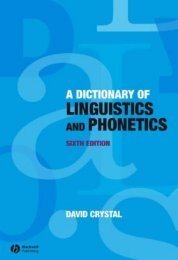url?sa=t&source=web&cd=3&ved=0CC0QFjAC&url=http://www.teachingenglish.org.uk/sites/teacheng/files/B369-Young-Learners-Activity-Book_v10
url?sa=t&source=web&cd=3&ved=0CC0QFjAC&url=http://www.teachingenglish.org.uk/sites/teacheng/files/B369-Young-Learners-Activity-Book_v10
url?sa=t&source=web&cd=3&ved=0CC0QFjAC&url=http://www.teachingenglish.org.uk/sites/teacheng/files/B369-Young-Learners-Activity-Book_v10
You also want an ePaper? Increase the reach of your titles
YUMPU automatically turns print PDFs into web optimized ePapers that Google loves.
TeachingEnglish <strong>Young</strong> <strong>Learners</strong> <strong>Activity</strong> <strong>Book</strong><br />
Activities<br />
Alternatives<br />
• The teacher can be the leader. If a child guesses the card correctly, they keep it. At the end of<br />
the game, when all the cards have been collected, the children take it in turns to say what they<br />
have, for example, ‘I have a chair, a table and a cupboard’.<br />
• Hatice Elif Kalaycioglu (Turkey) suggests the following alternative: instead of sitting in a circle,<br />
the children stand in a circle. The teacher plays some music and the children walk round the<br />
cards. When the music stops, the teacher calls out the item of vocabulary. The children have to<br />
point to the correct picture card. If you want to make this into a competition, the last child to<br />
point and any children who points to the wrong card can be ‘out’, until only one child remains.<br />
She also suggests putting the pictures on the board. The children can be divided into two<br />
teams, A and B. The teacher calls out one item of vocabulary and the first member of the team<br />
has to go to the board and either take the correct picture or point at it. The first child to do so<br />
wins the point.<br />
• The same activities can be used to practise sound/spelling associations. Instead of pictures,<br />
write the words on the cards, or use a mixture of picture and word cards. The children have to<br />
collect both the correct picture and word cards.<br />
• Ask the children to cut pictures out of magazines, newspapers etc and stick them on card<br />
(laminate them if you can). Over time, you can build up a class collection of picture cards that<br />
can be used for a number of different activities.<br />
No resources?<br />
Flashcards do not have to be of professional quality. Basic drawings on scrap paper are fine.<br />
© British Council 2012<br />
95





